Role of Freedom Fighters from Assam in the Independence Movement
Kanaklata Barua
Early Life and Background
Born on 22 December 1924 in Borangabari village, undivided Darrang district, Assam.
Grew up during a time of rising national consciousness.
- Inspired by the freedom struggle and actively sought ways to contribute.
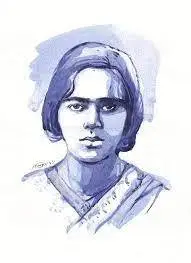
Kanaklata Barua
Involvement in the Freedom Movement
Application to Azad Hind Fauj
Kanaklata attempted to join Azad Hind Fauj (INA), led by Netaji Subhas Chandra Bose.
Her application was rejected due to being a minor at the time.
Joining Mrityu Bahini
Became a member of Mrityu Bahini, a suicide squad formed during the Quit India Movement.
Joined the group at the young age of 17, demonstrating her courage and resolve.
Martyrdom in the Quit India Movement
Gohpur Flag Hoisting Protest (20 September 1942)
The revolutionary camp of Gohpur planned to hoist the national flag at the local police station.
Kanaklata led a peaceful procession of unarmed villagers to execute the plan.
Confrontation with Police
Rebati Mahan Som, the officer in-charge, warned of serious consequences.
Kanaklata refused to retreat and continued leading the procession.
Sacrifice for the Nation
The police opened fire, and Kanaklata was shot dead while holding the national flag.
Mukunda Kakoti, her compatriot, picked up the flag and was also martyred.
Legacy
Kanaklata Barua is remembered as a symbol of youthful patriotism and sacrifice.
Her fearless spirit and ultimate sacrifice continue to inspire generations of Indians.
Major Paona Brajabashi
Background and Historical Context
Major Paona Brajabashi was a valiant soldier of the Kangleipak Kingdom (Manipur).
Served under Maharaja Kulachandra during the Anglo-Manipur War of 1891.
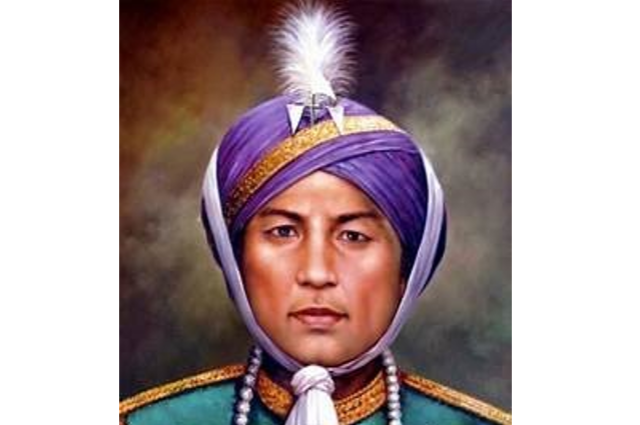
Major Paona Brajabashi
Battle of Khongjom (23 April 1891)
Fierce Resistance Against the British
Paona led a brave defence at the Battle of Khongjom, one of the fiercest battles in Indian history.
Fought despite being undermanned and under-armed.
Manipuri soldiers fought until the last man, showcasing their unwavering spirit.
Offer of Defection
Paona was captured alive and given a choice by a Manipuri British Army Officer.
He was offered a high-ranking post in the British army in return for switching sides.
Paona’s Patriotic Response
Refused to betray his homeland, stating that death was better than treason.
Took off his headgear and asked to be beheaded rather than serve the British.
Legacy and Remembrance
Remembered as a symbol of Manipuri courage and loyalty.
Kakchingtabam Hemchandra Sharma, Secretary of the Paona Memorial Arts and Rural Development Services, commemorates his unparalleled sacrifice.
His martyrdom continues to inspire generations in Manipur and beyond.
Bir Tikendrajit Singh
Early Life and Legacy
Bir Tikendrajit Singh was the Crown Prince of Manipur.
Revered for his supreme sacrifice and extraordinary valour in defending Manipur’s territorial integrity.
He is honoured alongside General Thangal, both remembered as heroes in Manipur’s history.

Political Turmoil and British Intervention
Peaceful Relations Before 1890
The Manipur Kingdom maintained peaceful relations with the British before 1890.
Crisis After Maharaja Chandrakiri’s Death
The death of Maharaja Chandrakiri in 1890 triggered a power struggle.
A series of coups, exiles, and pleas for British assistance destabilized the region.
British Involvement and Arrest Attempt
British officials arrived in Imphal with 400 Gurkha soldiers to arrest Tikendrajit and remove Maharaja Kulachandra Singh.
A midnight raid to capture Tikendrajit was foiled by Manipuri soldiers.
The Anglo-Manipur War (1891)
Execution of British Officials
Following the failed arrest, King Kulachandra ordered the execution of five British officers on March 24, 1891.
Outbreak of War
This incident led to the Anglo-Manipur War.
Tikendrajit led Manipuri forces against British invasion with great courage and determination.
Fall of Manipur and Tikendrajit’s Execution
Despite their bravery, the Manipuris were outmatched by British forces.
British occupied Manipur on 27 April 1891.
Tikendrajit was captured, subjected to a mock trial, and publicly hanged on 13 August 1891.
Legacy
Tikendrajit is immortalized in Manipur’s history as a martyr and patriot.
His resistance against imperialism continues to inspire generations.
Rani Gaidinliu
Early Life and Revolutionary Spirit
Born in 1927, Rani Gaidinliu belonged to the Rongmei Naga tribe.
At just 13 years old, she proclaimed, “We are free people, the white men should not rule over us,” inspiring many in her community.
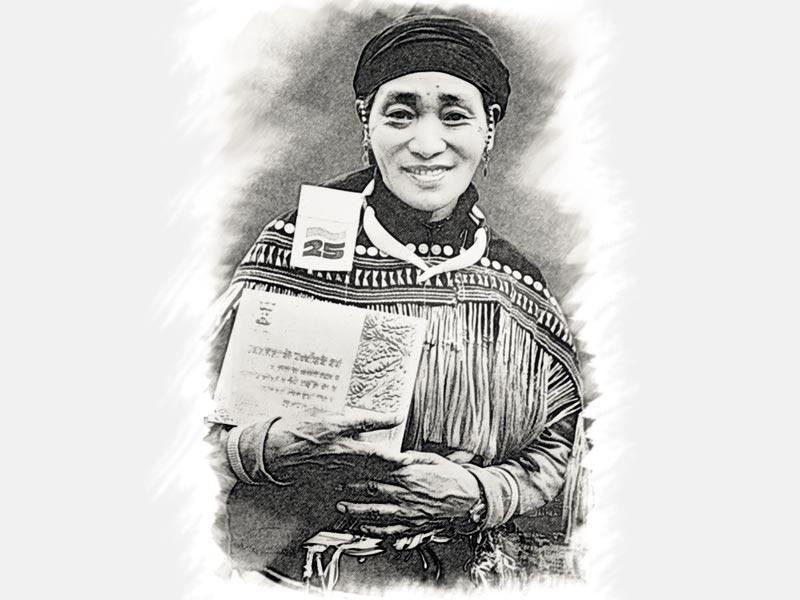
Rani Gaidinliu
Association with the Heraka Movement
Joining the Movement
In 1927, she joined the Heraka religious reform movement initiated by her cousin Haipou Jadonang.
The movement aimed to standardize traditional Naga beliefs and resist the spread of Christianity and Vaishnavism.
Transformation into Political Movement
Under Rani Gaidinliu’s leadership, the Heraka movement evolved into a political struggle.
It aimed to expel British rule from the northeastern hills.
Resistance Against British Rule
Civil Disobedience
She urged the people to:
Not pay taxes
Refuse British labour
Resist colonial authority
Going Underground
Led several underground attacks against British forces.
Arrest and Imprisonment
Arrested in 1932 at the age of 16.
Sentenced to life imprisonment for her anti-British activities.
National Recognition and Later Life
Title of ‘Rani’
In 1937, Jawaharlal Nehru visited her at Shillong Jail and conferred upon her the title of “Rani”.
Post-Independence Contributions
Released in 1947, after India gained independence.
Continued working for the upliftment of Naga communities and preservation of indigenous culture.
Haipou Jadonang
Early Life and Leadership Emergence
Haipou Jadonang was a Rongmei Naga leader from present-day Manipur.
Regarded as a spiritual figure from a young age.
- Drew followers from neighbouring villages, especially from the Zeliangrong tribal community, which includes Rongmei, Zeme, and Liangmai tribes spread across Assam, Manipur, and Nagaland.
Haipou Jadonang
Social and Political Contributions
Religious and Cultural Revival
Initiated the Heraka movement, aiming to revive indigenous Naga faiths and resist colonial religious imposition.
Formation of ‘Riphen’ Army
Founded a 500-member force named ‘Riphen’, comprising both men and women.
Trained in:
Military tactics and reconnaissance
Use of traditional weaponry
Community services like farming, livestock care, and wood collection
Mobilization Through Cultural Means
Composed revolutionary songs praising the struggle against British rule.
His teachings and songs were later propagated by disciple Rani Gaidinliu.
Arrest and Martyrdom
On 19 February 1931, he was arrested by the British on charges of sedition.
Later falsely accused of murder and executed by hanging.
He was only 26 years old at the time of his death.
Legacy
Remembered as a visionary reformer, spiritual icon, and fearless freedom fighter.
His life inspired a movement of resistance in northeast India, particularly among the Zeliangrong Nagas.
U Tirot Sing Syiemlieh
U Tirot Sing Syiemlieh – The Khasi Warrior Chief
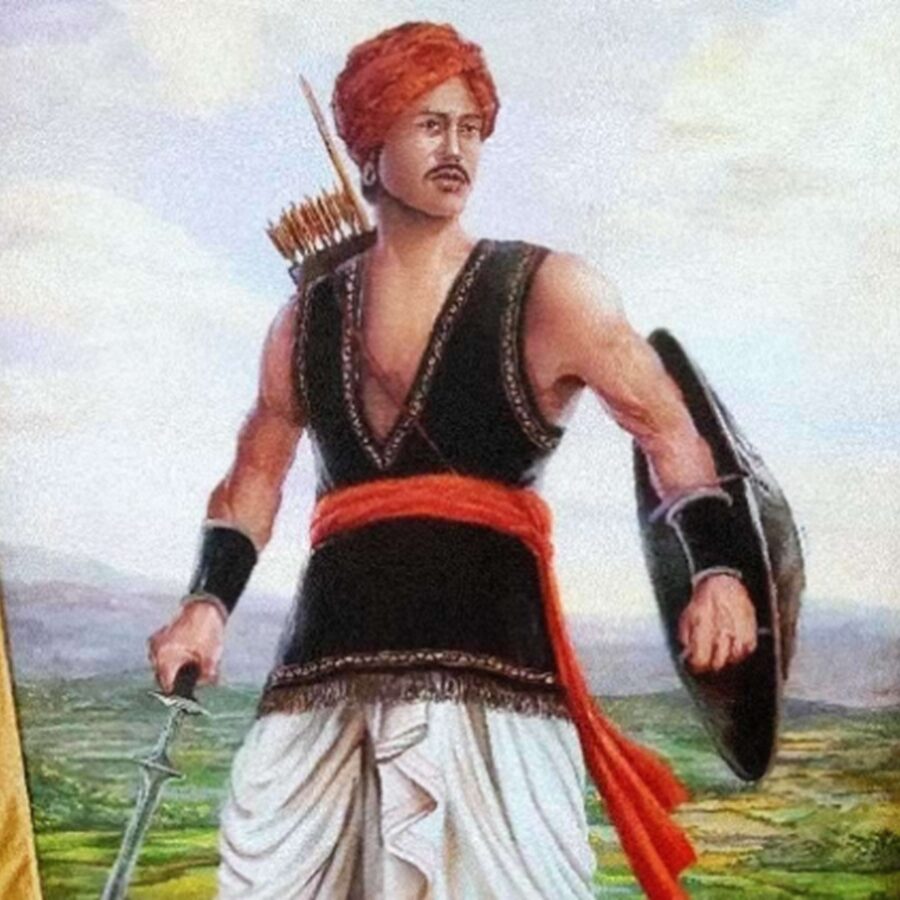
Early Life and Background
Born in 1802, U Tirot Sing was the chief of Nongkhlaw, a region in the Khasi Hills of Meghalaya.
He led the Khasi resistance during the Anglo-Khasi War (1829–1833).
Conflict with the British
The British, led by David Scott, sought to build a road through Khasi territory to connect Assam and Bengal.
Tirot was promised control of the duars (Assam floodplains) and trade benefits in return for permission.
The British reneged on their promises, which sparked rebellion.
Attack on British Garrison
On 4 April 1829, Tirot’s forces attacked the British garrison at Nongkhlaw, killing two officers.
The British retaliated with modern firearms, initiating a four-year guerrilla war.
Capture and Death
In 1833, after sustaining an injury, Tirot was betrayed and captured.
He was deported to Dhaka, where he died in captivity on 17 July 1835.
Moje Riba
Moje Riba – The First Congress Leader of Arunachal Pradesh
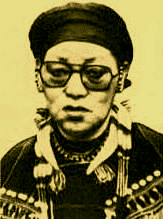
Early Life and Entry into Freedom Struggle
Born in the late 19th century in Daring village, West Siang District, Arunachal Pradesh.
Initially worked in the cane trade in Dibrugarh, Assam, where he learned about the Indian freedom movement.
Political Activism and INC Involvement
Joined the Indian National Congress, collaborating with Gopinath Bordoloi and Lalit Hazarika.
Became the first INC President from Arunachal Pradesh.
Affectionately known as Aboh Nyiji (“Old Father of All”).
Contributions and Recognition
Led marches and mobilized local support for India’s independence.
Awarded the Tamra Patra by Prime Minister Indira Gandhi on 15 August 1972, during the Silver Jubilee of Independence.
Passed away in 1982, remembered as a pioneer of Arunachal Pradesh’s political awakening.
Gopinath Bordoloi
Gopinath Bordoloi – Lokapriya Leader and Architect of Modern Assam

Early Life and Entry into Politics
Born on 6 June 1890, in Assam.
Became a follower of Mahatma Gandhi and joined the Indian National Congress in 1922.
Started his political journey during the Non-Cooperation Movement.
Role in the Indian Freedom Struggle
Actively participated in the freedom movement during the 1930s and the Quit India Movement (1942).
Known for his firm anti-British stance and dedication to Gandhian principles.
Role During India’s Independence (1947)
Came to national prominence during the implementation of the Mountbatten Plan.
Strongly opposed the inclusion of Assam into East Pakistan as proposed by the Muslim League.
Successfully ensured Assam remained a part of independent India.
Post-Independence Contributions
Became the first Chief Minister of undivided Assam after Independence.
Played a key role in the rehabilitation of refugees from East Pakistan following the Partition.
Earned the title ‘Lokapriya’ (Beloved of the People) for his humanitarian and political contributions.
Death and Legacy
Passed away on 5 August 1950.
Remembered as one of the tallest leaders from Assam, a freedom fighter, and the architect of modern Assam.
U Kiang Nangbah
U Kiang Nangbah – The Hero of Jaintia Hills
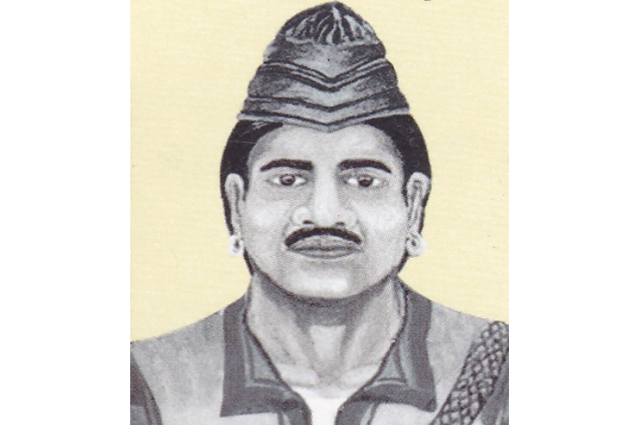
Background and Early Life
A freedom fighter from Meghalaya, led an uprising against the British in the 1860s.
Born before the annexation of the Jaintia Hills (1835) by the British.
Lived in the locality now known as Tpep-pale.
Reason for Rebellion
British interference in tribal customs and imposition of house tax (1860) sparked widespread anger.
Tribal communities united under Nangbah’s leadership.
Resistance and Capture
Led an attack on a British police station, setting fire to weapons.
Carried out guerrilla warfare to weaken British control.
Eventually captured in December 1862 after betrayal by an associate.
Subjected to a mock trial and executed by hanging.
Pa Togan Sangma
Pa Togan Sangma – Garo Warrior of Meghalaya
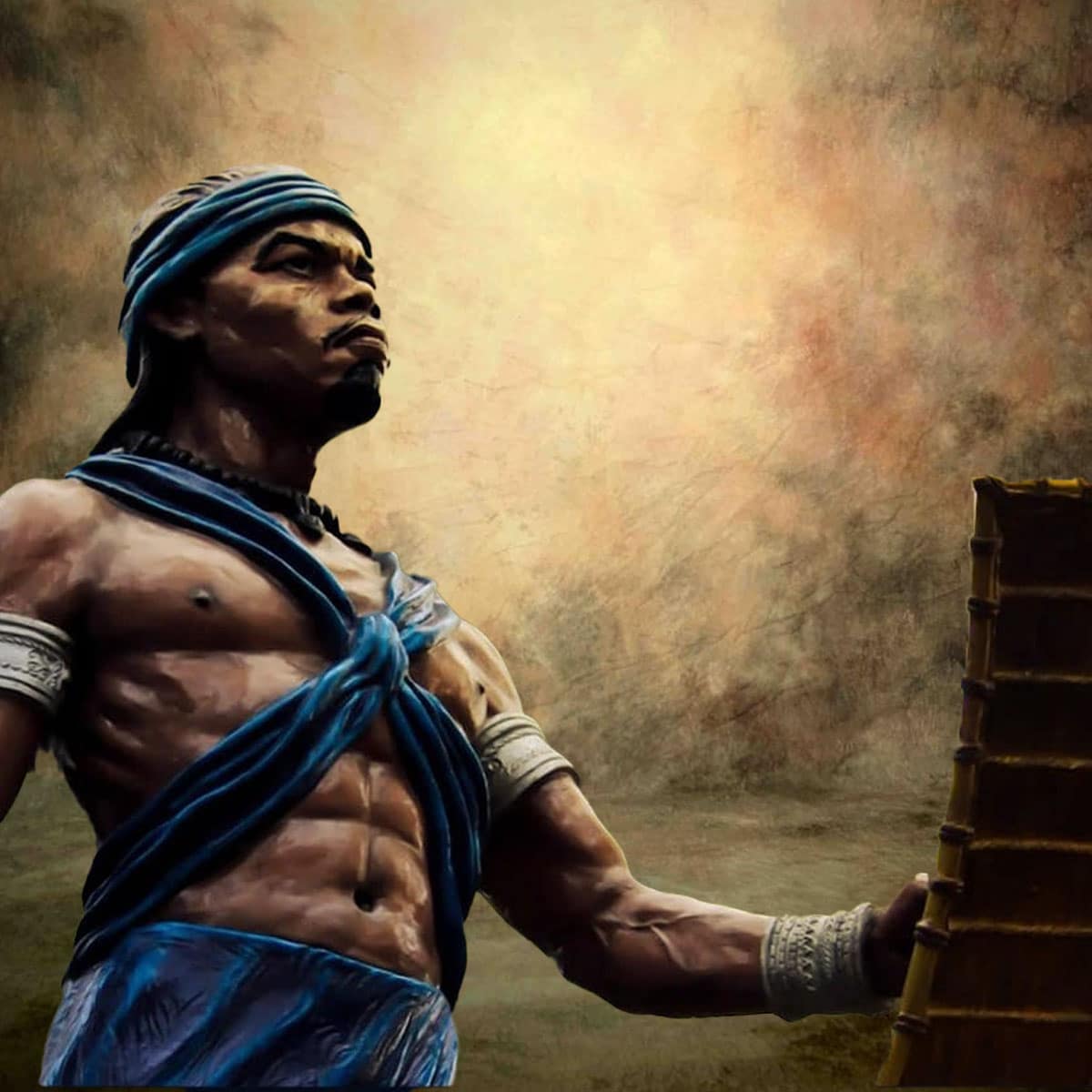
Early Life and Legacy
Also known as Pa Togan Nengminja Sangma, a 19th-century warrior from the Garo Hills.
Born in Samanda village, near Williamnagar, East Garo Hills.
Known for his physical strength and combat skills.
Final Battle and Sacrifice
In 1872, British troops camped near Chisobibra village.
Sangma and his warriors launched an assault, fighting bravely despite being ill-equipped.
Killed in action on 12 December 1872, defending his homeland.
Other Notable Freedom Fighters of Northeast India
Kushal Konwar – Martyred during the Quit India Movement.
Shoorvir Pasaltha Khuangcher – Brave warrior from Mizoram.
Trilochan Pokhrel – A freedom fighter from Sikkim.
Matmur Jamoh – Tribal warrior from Arunachal Pradesh.
Bhogeswari Phukanani and Krishna Nath Sharma – Iconic figures of Assam’s struggle.
Maniram Dewan
Maniram Dewan: Freedom Fighter and Economic Pioneer of Assam
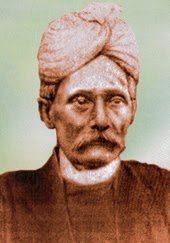
Early Life and Background
Full Name: Maniram Dutta Barua (1806–1858), popularly known as Maniram Dewan.
Belonged to an influential noble family of Assam with strong connections to the Ahom Kingdom.
Held initial posts under the British administration such as:
Tehsildar
Sheristadar (record keeper)
Contributions to Assam’s Tea Industry
Discovered Assam Tea Potential: Maniram Dewan informed the British about the tea-growing traditions of local tribes.
Appointed as Dewan of Assam Tea Company in 1839.
Resigned soon after to pursue private entrepreneurship.
Became the first Indian to start a commercial tea plantation in Assam with two private gardens:
Demonstrated local entrepreneurship during colonial rule.
Transition from British Ally to Rebel Leader
Initially loyal to the British, later grew critical of British policies due to:
Exploitative taxation
Opium cultivation policies
Marginalisation of local Assamese in administration
Aligned himself with Ahom King Purandar Singha and served as his Prime Minister.
Opposed appointment of non-Assamese (Marwaris and Bengalis) as Mauzadars.
Petitioned Calcutta’s Sadar Court to reinstate Ahom rule—petition was rejected.
Role in the 1857 Revolt
Used the Indian Revolt of 1857 as an opportunity to:
Restore Ahom rule
Expel the British from Assam
Collaborated with King Kandarpeswar Singha and others.
Planned a rebellion to coincide with Durga Puja (1857):
Aim: Install Kandarpeswar Singha as king in Jorhat
Plan: Extend control to Sivasagar and Dibrugarh
British Crackdown and Execution
The plot was exposed due to intercepted letters.
Maniram Dewan was arrested in Calcutta and brought to Jorhat.
Tried and convicted by Captain Charles Holroyd, who had intercepted the correspondence.
Publicly hanged on 26 February 1858, alongside Piyali Barua, for their involvement in the rebellion.
Business Ventures and Innovations
Apart from his political role, Maniram Dewan was also a visionary businessman:
Tea Industry: First Indian to establish private tea gardens.
Also engaged in:
Gold procurement
Salt production
Iron smelting
Ivory and ceramic works
Boat & brick manufacturing
Agricultural product processing
Legacy
Remembered as one of Assam’s first martyrs of the freedom struggle.
Celebrated for his dual role as a nationalist and economic pioneer.
Symbol of early resistance to British colonialism in Northeast India.
Kushal Konwar
Kushal Konwar: The Martyr of Quit India Movement

Early Life and Education
Born: In 1905 at Balijan, near Sarupathar, present-day Golaghat district, Assam.
Inspiration: Deeply influenced by Mahatma Gandhi and his principles of non-violence during his school days.
Left school at age 21 to actively join the freedom movement.
Social Contribution:
Established a primary school and worked as an honorary teacher.
Due to financial hardships, worked in tea estates—first under a British planter, then under an Assamese owner.
Entry into Freedom Struggle
In 1936, resigned from the tea estate job to fully dedicate himself to the Indian independence movement.
Joined the Indian National Congress and became the President of Sarupathar Congress Committee.
Participated in the Non-Cooperation Movement and later led Satyagraha campaigns in his region.
Recognised for his organizational skills and dedication to Gandhian principles.
Role in Quit India Movement (1942)
Following the Quit India Resolution by the Congress Working Committee, Gandhi called for nationwide resistance.
With top Congress leaders arrested, the movement was led by local leaders like Kushal Konwar in Assam.
Although the movement was to be non-violent, some local Congress workers formed the Mrityu Bahini (Suicide Squad) and resorted to violent methods like:
Derailing trains
Burning bridges
The Train Derailment Incident (10 October 1942)
Around midnight, a British military train was derailed near Sarupathar Railway Station.
Caused by removal of fish-plates from the track, allegedly by members of Mrityu Bahini.
Resulted in the death of approximately 1,000 British soldiers.
Arrest and False Accusation
In response, the British cordoned off Sarupathar, arrested many locals, and assaulted innocent civilians.
Kushal Konwar, being a key Congress leader, was also arrested and falsely implicated as the mastermind of the sabotage.
Despite not being involved and opposing violence, he was tried unfairly by the District Commissioner of Sivasagar.
Unjust Trial and Execution
The trial was biased and symbolic, lacking evidence or proper legal procedure.
Four men were sentenced to death:
Kushal Konwar
Dharmakanta Deka
Ghanashyam Saikia
Kanakeswar Konwar
Later, the Governor of Assam revoked the death sentence for three, but Kushal Konwar’s sentence stood.
Executed: On 15th June 1943 at Jorhat Jail by hanging.
Legacy
Kushal Konwar is remembered as the first martyr from Assam to be executed during the Quit India Movement.
Symbol of:
Sacrifice
Non-violent patriotism
Unwavering loyalty to Gandhian ideals
His martyrdom continues to inspire generations across Assam and India.
Hem Barua
Hem Barua – The ‘Tyagbir’ of Assam

Early Life and Identity
Known as Hem Barua, he hailed from Sonitpur district, Assam.
Popularly called “Tyagbir”, meaning “brave renouncer” for his sacrifice and patriotism.
Contributions
A freedom fighter, social activist, social worker, and a renowned writer.
Played a major role in modern Assamese literary movement.
Active in social and political reforms during and after the freedom struggle.
Political Career
After Independence, he joined the Socialist Party.
Elected multiple times to the Lok Sabha from the Guwahati constituency.
Bhogeswari Phukanani
Bhogeswari Phukanani – Martyr of Quit India Movement

Personal Life
Born in 1885 in Nagaon district, Assam.
Married to Bhogeswar Phukan, mother of 8 children (2 daughters and 6 sons).
Role in Freedom Movement
Actively participated in the Quit India Movement (August Kranti).
Became involved in non-violent protests and marches despite being a housewife and mother.
Set up Congress offices in Berhampur, Babajia, and Barpujia areas of Nagaon.
Sacrifice and Martyrdom
In 1930, participated in civil disobedience against British rule.
Arrested during a picketing campaign.
Shot dead during a peaceful protest march – remembered as a prominent martyr of the movement.
Bhimbor Deori
Bhimbor Deori – Tribal Leader and Freedom Fighter
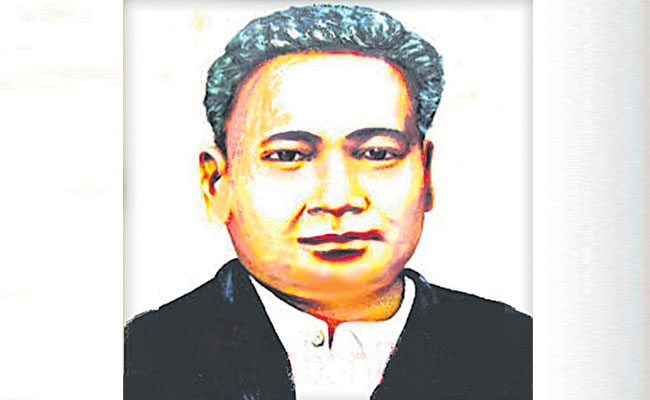
Background
Born on 16 May 1903, passed away on 30 November 1947.
A lawyer, freedom fighter, and tribal rights activist from Assam.
Role in Tribal Rights and Politics
Co-founder and General Secretary of the Assam Tribal League in 1933.
Key architect of the Khasi Darbar Hall Resolutions (21–23 March 1945), which advocated for:
Restoration of indigenous homelands
Resistance against Indian occupation of tribal lands.
Advocacy for Social Justice
Opposed the removal of land revenue remissions.
Worked for land patta allotment to indigenous communities.
Raised concerns for Scheduled Castes and Scheduled Tribes in the Assam Legislative Council.
Advocated for:
Equal access to university dining halls (June 18, 1941).
Criticized ineffective literacy campaigns (March 1943 session).
Tarun Ram Phukan
Tarun Ram Phukan: A Prominent Leader of Assam
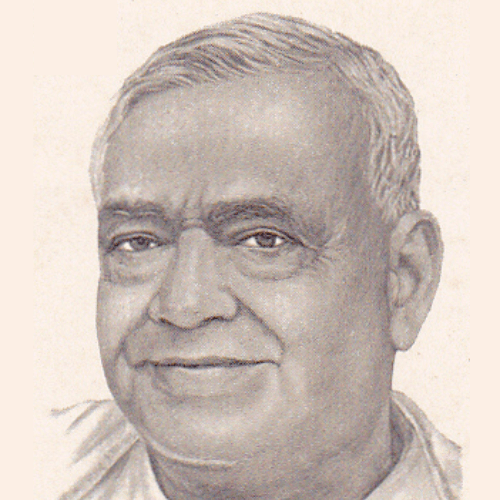
Personal Information
Birth and Death: Born on January 22, 1877, and passed away on July 28, 1939.
Nickname: Known as “Deshbhakta” (Patriot) for his contributions to India’s freedom struggle.
Early Education and Career
Education:
Attended Cotton Collegiate School, Guwahati.
Later studied at Presidency College, Calcutta.
Law Education: Moved to the Inner Temple in London to pursue law.
Became a qualified lawyer.
Teaching Career: Worked as a lecturer at Earle Law College, Guwahati.
Political Involvement
Assam Association:
A prominent member of the Assam Association until 1920.
The organization played a key role in early political movements in Assam.
Formation of the Assam Branch of the Indian National Congress (INC):
In 1921, helped form the Assam Branch of the Indian National Congress.
Elected as its first President.
Involvement in the Non-Cooperation Movement
Leadership Role: Took a leading role in spreading the message of Mahatma Gandhi.
Traveled extensively across Assam to promote the Non-Cooperation Movement.
Imprisonment: In 1921, was sentenced to one year of rigorous imprisonment for his involvement in the movement.
Contributions to the Indian National Congress
Chairman of Pandu Session:
Elected Chairman of the Reception Committee for the Pandu Session of INC in 1926.
Chairman of Local Governance:
Served as Chairman of both the Municipal Board and Local Board of Guwahati.
Launched several welfare programs for the upliftment of underprivileged sections of society.
Social Welfare:
Established a Leper Asylum in Guwahati to help those affected by leprosy.
Cultural and Literary Contributions
Orator and Writer: Known for his oratory skills and as a prominent writer.
President of Asam Sahitya Sabha:
Elected President of the Asam Sahitya Sabha during its Goalpara Session in 1927.
Leadership in Assam Chhatra Sammelan:
Served as President of the Assam Chhatra Sammelan in 1928, an organization focused on student welfare.
Technological and Modern Innovations
Firsts in Guwahati:
Introduced the first bicycle and the first motor car in Guwahati, contributing to the modernization of the city.
Formation of the Assam Provincial Congress Committee (APCC)
Creation of APCC
In 1921, the Assam Provincial Congress Committee (APCC) was formed, with its headquarters in Guwahati.
Kuladhar Chaliha was initially appointed as the president, and later, Phookan took over as President.
Key Members of APCC
The reconstituted APCC elected the following members to the All India Congress Committee (AICC):
Phookan, Gopinath Bordoloi, Bimala Prasad Chaliha, Chandranath Sarmah, Krishna Nath Sarmah, and Kanak Chandra Sarmah.
Mahatma Gandhi’s Visit
Under the leadership of Phookan, the APCC invited Mahatma Gandhi to Assam in 1921.
Gandhi’s visit gave a significant boost to the Non-Cooperation Movement in Assam, urging people to adopt Swadeshi principles.
MUNGRI ALIAS MALATI MEM
Mungri Alias Malati Mem: A Brave Activist

Background and Role in the Anti-Opium Campaign
Activism: Mungri, also known as Malati Mem, was a prominent figure in the anti-opium movement in Assam, particularly in the tea gardens.
Cause: She played an active role in raising awareness and combating the harmful effects of opium consumption in the tea garden communities.
Support for the Congress Volunteers
Prohibition Campaign: In 1921, she supported the Congress volunteers in their efforts to promote prohibition and anti-opium measures in the region.
Advocacy: Mungri’s involvement in this cause made her a key figure in the struggle for social and political reforms.
Martyrdom and Death
Murdered by Government Supporters: In 1921, Mungri was tragically killed by supporters of the government at Lalmati in Darrang district.
Reason for Killing: Her murder was a result of her active support for the Congress volunteers and her participation in the prohibition campaign.
- She became Assam’s first female Martyr.
Dariki Dasi Baruah
Dariki Dasi Baruah: A Martyr of the Freedom Struggle
Role in the Civil Disobedience Movement
Active Participation: Dariki Dasi Baruah was deeply involved in the Civil Disobedience Movement, contributing significantly to the fight for India’s independence.
Anti-Opium Campaign: She was also a leading member of the anti-opium campaign, fighting against the detrimental impact of opium in the region.
Arrest and Imprisonment
Arrested for Anti-Opium Picketing: On February 1, 1932, Dariki Dasi Baruah was arrested for her role in anti-opium picketing.
Jailed for Six Months: She was sentenced to six months of imprisonment for her activism in the anti-opium movement.
Personal Sacrifice and Refusal of Conditional Release
Pregnancy During Imprisonment: At the time of her arrest, Dariki Dasi Baruah was pregnant, which made her imprisonment even more difficult.
Refusal of Conditional Release: Despite being offered conditional release, she refused to leave prison under those terms, showing her unwavering commitment to the cause.
Death in Prison
Falling Ill: During her imprisonment, Dariki Dasi Baruah’s health deteriorated.
Death: She tragically passed away in prison on April 26, 1932, as a result of the harsh conditions she endured.
Tileswari Barua
Tileswari Barua: A Martyr of the Quit India Movement
Involvement in the Quit India Movement
Active Participation: Tileswari Barua was an active participant in the Quit India Movement, contributing to the fight against British colonial rule.
Location: She was involved in the movement in the region of Dhekiajuli, Assam.
Martyrdom
Attempt to Hoist National Flag: On September 20, 1920, Tileswari Barua attempted to hoist the national flag as a symbol of resistance to British rule.
Police Firing: During this act of defiance, she was shot dead in police firing. (That time her age was 12 Years)
Coincidence of Kanaklata Barua’s Death: On the same day, Kanaklata Barua, another freedom fighter, was also martyred under similar circumstances.
Rebati Lahon
Rebati Lahon: A Brave Fighter of the Quit India Movement
Role in the Quit India Movement
Active Participation: Rebati Lahon was an active participant and organizer in the Quit India Movement, which aimed to secure India’s independence from British rule.
Leadership: She played a significant role in organizing protests and resistance activities during the movement.
Imprisonment and Suffering
Arrest in 1942: Rebati Lahon was arrested in 1942 for her involvement in the Quit India Movement and was imprisoned by the British authorities.
Health Issues in Jail: During her imprisonment, she contracted pneumonia due to the harsh and unsanitary living conditions in jail.
Death After Release
Release and Death: After being released from prison, Rebati Lahon’s health remained fragile, and she passed away soon after her release, succumbing to the effects of her imprisonment.
KHAHULI DEVI
Khahuli Devi: Martyr of the Quit India Movement
Incident of Shooting
Date of Incident: Khahuli Devi was shot dead on September 20, 1942, during a police firing in Dehekiajuli.
Context: The incident occurred during the Quit India Movement, when widespread protests against British colonial rule were taking place across India.
Personal Details
Pregnancy at the Time of Death: Khahuli Devi was pregnant at the time she was shot, highlighting the tragic and brutal nature of her death during the freedom struggle.
Legacy
Sacrifice: Khahuli Devi’s death symbolizes the immense sacrifices made by Indian women and freedom fighters in the struggle for independence.
KUMALI DEVI
Kumali Devi: Martyr of the Quit India Movement
Incident of Shooting
Date of Incident: Kumali Devi was shot dead on September 20, 1942, during the Dhekiajuli police firing, which was part of the larger repression of the Quit India Movement protests.
Context: She was among the several freedom fighters who were killed by police firing while protesting against British rule during the Quit India Movement.
Association with Other Martyrs
Co-Martyrs: Kumali Devi was martyred along with Tileswari Baruah and Khahuli Devi, who were also killed in the same incident on September 20, 1942.
Collective Sacrifice: The three women’s deaths reflect the significant sacrifices made by women and ordinary citizens in the struggle for India’s independence.
Padumi Gogoi
Padumi Gogoi: A Brave Participant in the Quit India Movement
Role in the Quit India Movement
Active Participation: Padumi Gogoi was an active participant in the Quit India Movement, particularly from Dhekiajuli, Assam.
Contribution to the Movement: She took part in protests and resistance activities aimed at challenging British rule in India.
Incident of Injury and Arrest
Lathi Attack (September 20, 1942): On September 20, 1942, Padumi Gogoi was wounded in a lathi charge (police baton attack) near the Dhekiajuli police station, which was part of the crackdown on Quit India Movement protests.
Arrest and Imprisonment: Following the injury, she was arrested by British authorities and jailed for six months for her role in the movement.
Health and Death
Release and Health Deterioration: After serving her sentence, Padumi Gogoi was released from jail, but her health had deteriorated due to the harsh conditions during her imprisonment.
Death: She died soon after her release, succumbing to the physical toll caused by her injuries and the poor prison conditions.
